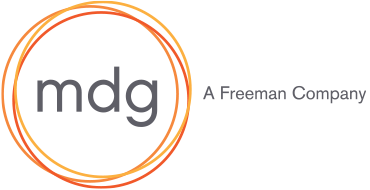
Now that we have your attention, let’s talk about how to best prepare for the scenario we hope to avoid. Because it’s quite likely that even if you do everything right to prepare for your next event and follow all the health and safety guidelines onsite, you’ll still get the dreaded news — an attendee (or many) tests positive for COVID-19. What happens next? We’ve provided a few recommendations to help you develop a crisis communications plan for this pandemic era.
Let participants and staff know what to expect before they arrive.
By setting expectations in advance, you’ll avoid issues later. Clearly communicate the details of enhanced health and safety measures to your attendees, your exhibitors, temporary staff and anyone else who will be involved in the onsite experience. Include a code of conduct in the registration process (and present it to employees in advance) to get everyone on the same page. This step can be especially helpful should you need to provide evidence that participants were made aware of – and agreed to abiding by – your onsite safety measures.
Define roles, audiences and channels early on.
Information travels fast, which is why you have to be able to move faster. To be able to react quickly in the event of a crisis, make sure your team is clear on a few points early on:
-
- Task assignments. Designate a single spokesperson who will communicate with the media and make sure everyone on your team knows who’s in charge of which tasks (who’s monitoring social media, who’s contacting key stakeholders, who’s pausing scheduled content, etc.).
- Audiences. Know who you’ll need to notify and when you’ll need to notify them.
- Channels. You have an arsenal of communication methods at your disposal (email, phone calls, SMS, etc). Align them with your audiences to ensure you get the message across in the right way, at the right time.
Prepare (at least some of) your messaging ahead of time.
Have the following messaging essentials at the ready: a statement or press release, talking points and a robust Q&A to help your internal team tackle the tough questions. That way, you’ll be able to tailor your drafted messaging for the specific situation and get it out the door a lot earlier than if you were starting from scratch.
Develop your messaging with your legal team or advisor to ensure that you’re maintaining confidentiality, meeting your reporting obligations and being accountable and transparent without saying anything that could cause trouble later on. Also, don’t forget to put the cardinal rule of marketing—know your audience—to use. By thinking about what your different audiences need—straight facts for your spokesperson, genuine compassion for attendee and exhibitor communications, etc.—you can make sure your messages resonate. While customization is definitely the way to go, anything you or your team drafts should be concise, clear, factual, express concern for your participants’ well-being and explain the steps that were taken to protect their health, where appropriate.
Monitor and Respond.
If a situation does arise and you need to put your plan into action, it’s important to keep up on what’s happening, what people are saying and what’s working. Leverage social listening, Google alerts, searches for key terms and any other metrics or tools that will help your team monitor the current sentiment and developments, as well as determine which messages are most effective. Every situation is different, which is why staying agile and proactive is critical.
Evaluate.
All experiences are learning experiences. After the dust settles, call a team meeting and, together, look at what happened, which channels and messages worked best and what could have been done better. Hopefully there isn’t a “next time,” but if there is, you’ll be even more prepared.
A version of this article originally appeared in PCMA Convene.


